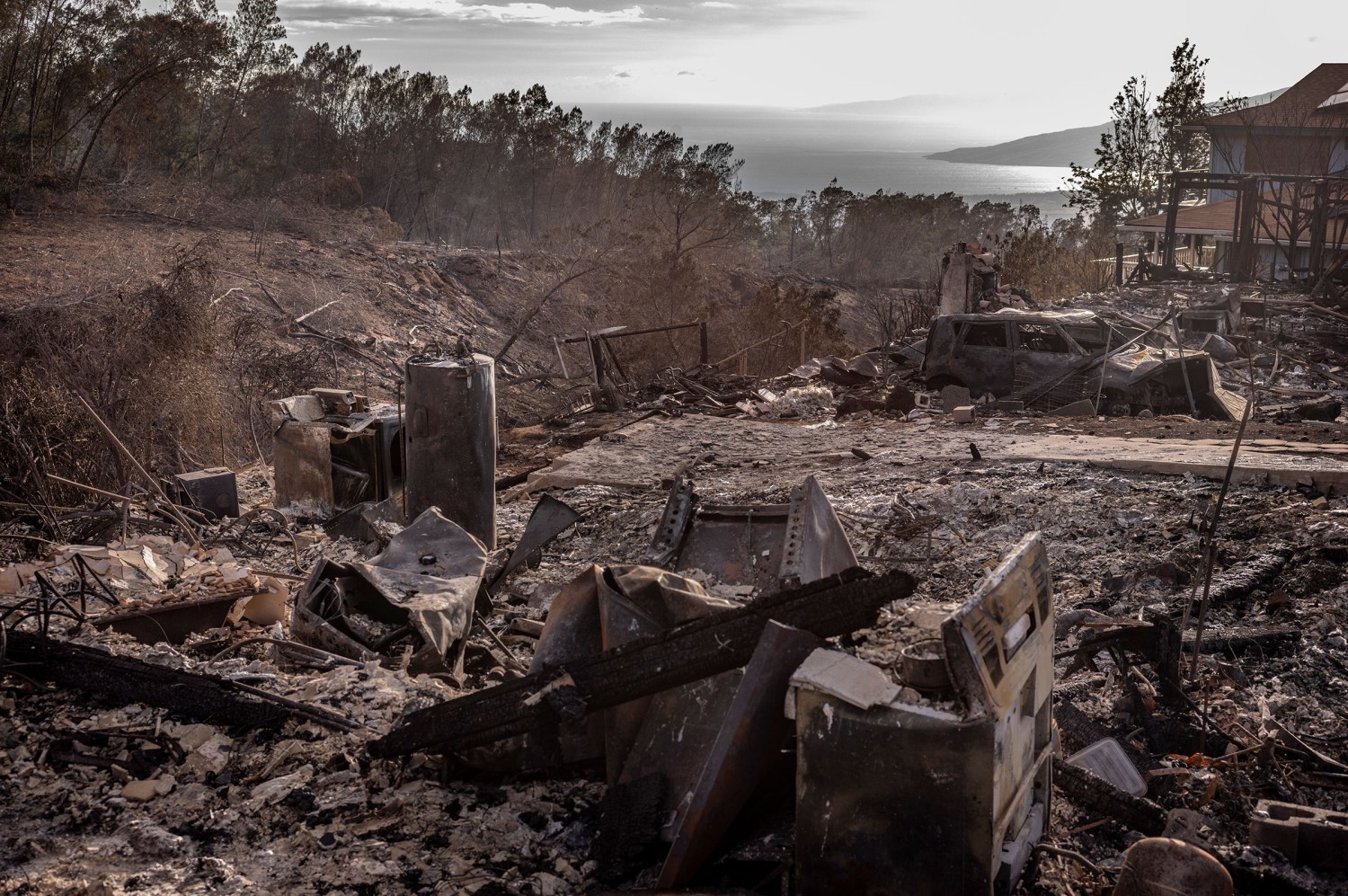
TEXT BY KARL VICK | PHOTOGRAPHS BY DAVID BUTOW
UPDATED: AUGUST 17, 2023 9:46 AM EDT | ORIGINALLY PUBLISHED: AUGUST 14, 2023 11:00 PM EDT
Images of smoldering landscapes have been coming out of Hawaii for as long as there’s been photography. But those pictures were ultimately about creation: Because the archipelago is among the youngest pieces of land on earth, built around the volcanos reaching from the sea floor, every eruption announced another addition. And if flowing lava took houses, or even whole neighborhoods, on its way to augment the island’s coast, that destruction happened slowly—and with so much warning that professional photographers had time to gather from around the world to document it.
Lahaina vanished in less than a day. And without warning. The destruction on Maui was unalloyed. A brush fire that sprang back to life on the afternoon of Aug. 8 had, by mid-morning on Aug. 9, reduced every building and vehicle in the historic city of 13,000 to the color of ash. The death toll, which stood at 99 on Aug. 15, made it the deadliest U.S. wildfire in more than 100 years, and the search for victims was far from over.
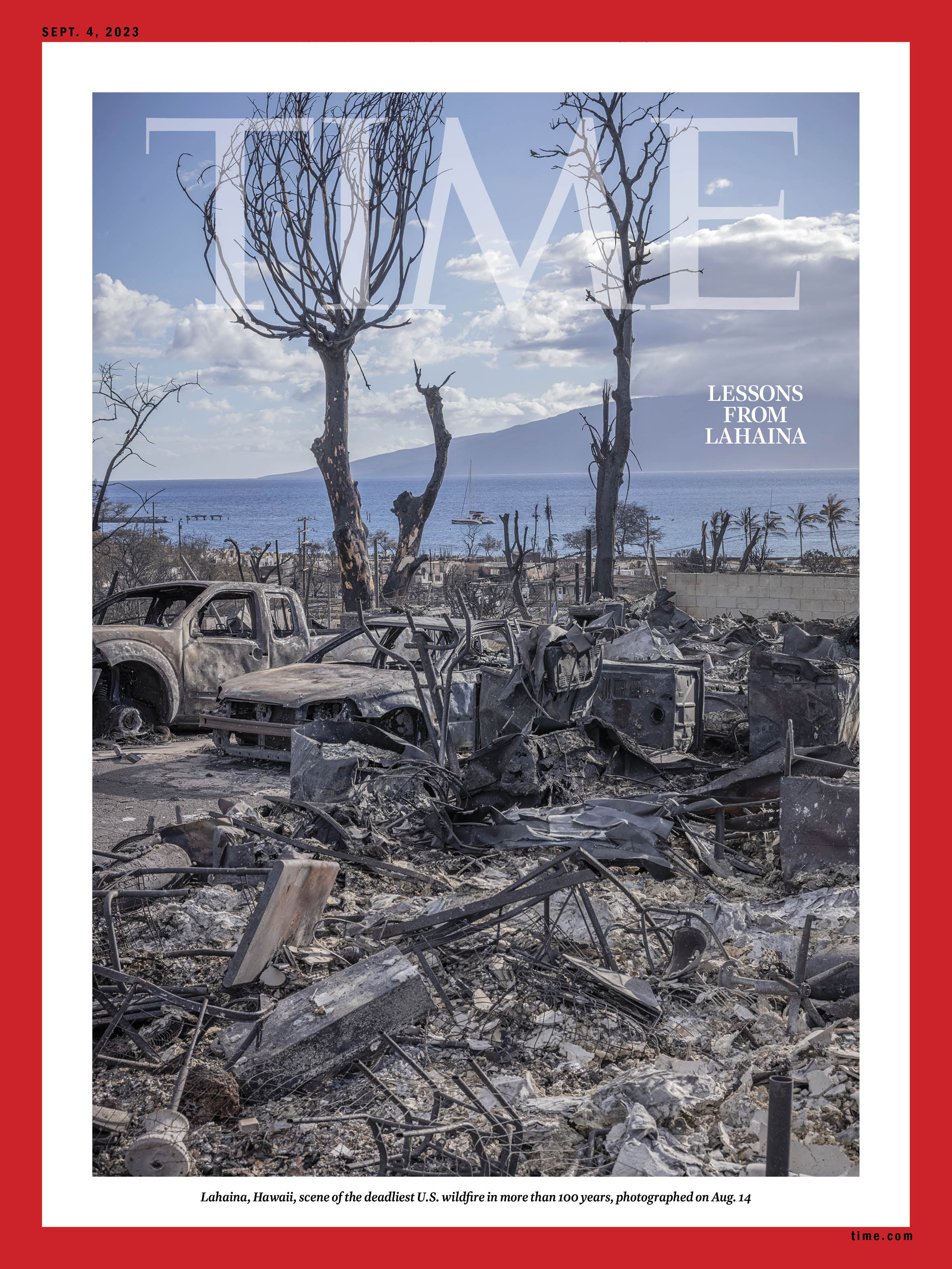
The night sky over the city’s harbor glowed orange, images of the flames captured by citizen journalists—people holding up camera phones as the embers rode howling winds to the next bit of fuel, in a leeward region whose famously dry, hot summers had been aggravated by drought. At least 2,200 structures burned to the ground. Some people survived by climbing into the sea.
Read more: How to Help Those Affected by the Maui Wildfires
In the summer of 2023, weather reports sounded like klaxons, and the very sky pulsed red with warning. Even in a world where technology exists that might mitigate future harms, if only we would put it to use, we are confronted again and again with our powerlessness in the face of humankind's own past actions. And so the news from Maui carried a potency beyond even the devastating tally of deaths. Much of what makes Hawaii feel like paradise, after all, is a lushness that—even among the infrastructure of mass tourism—reflects a culture of respectful harmony, first of all with nature. But along with the rest of the world, the islands have grown hotter, drier, and subject to extreme weather, like the wind that drove the flames down the mountain and the people into the sea. There is no escape.

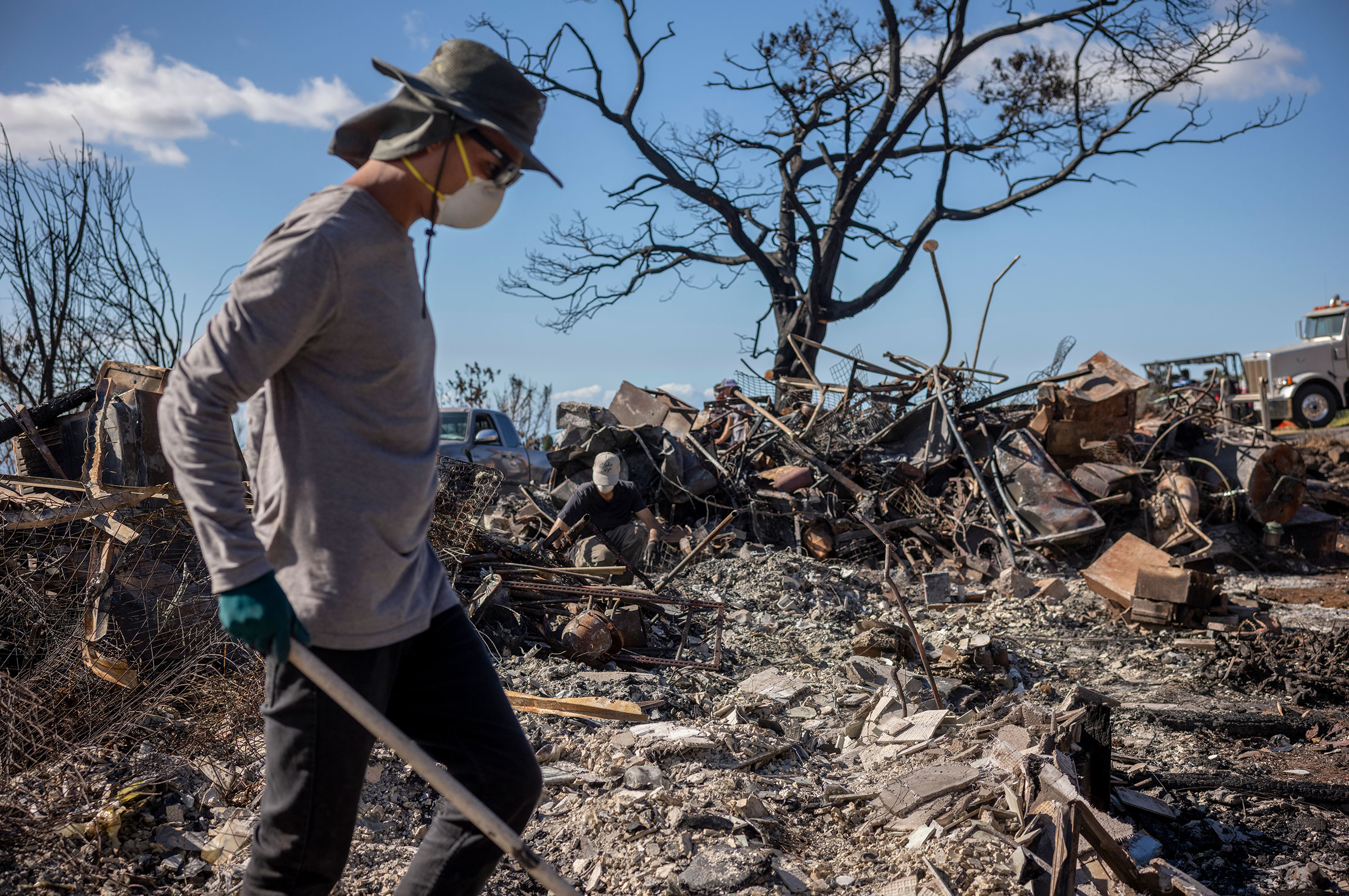
David Butow for TIME
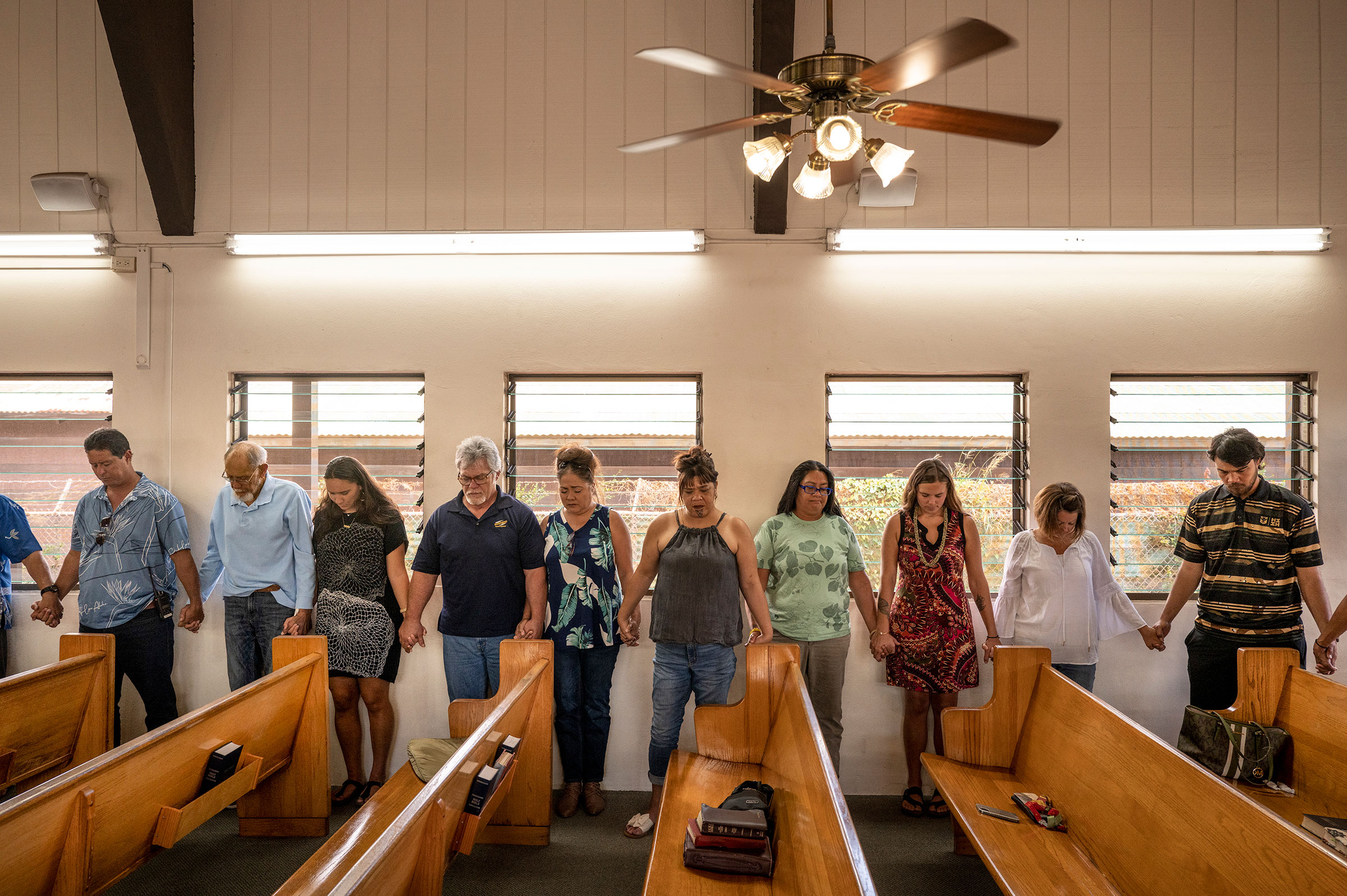
David Butow for TIME
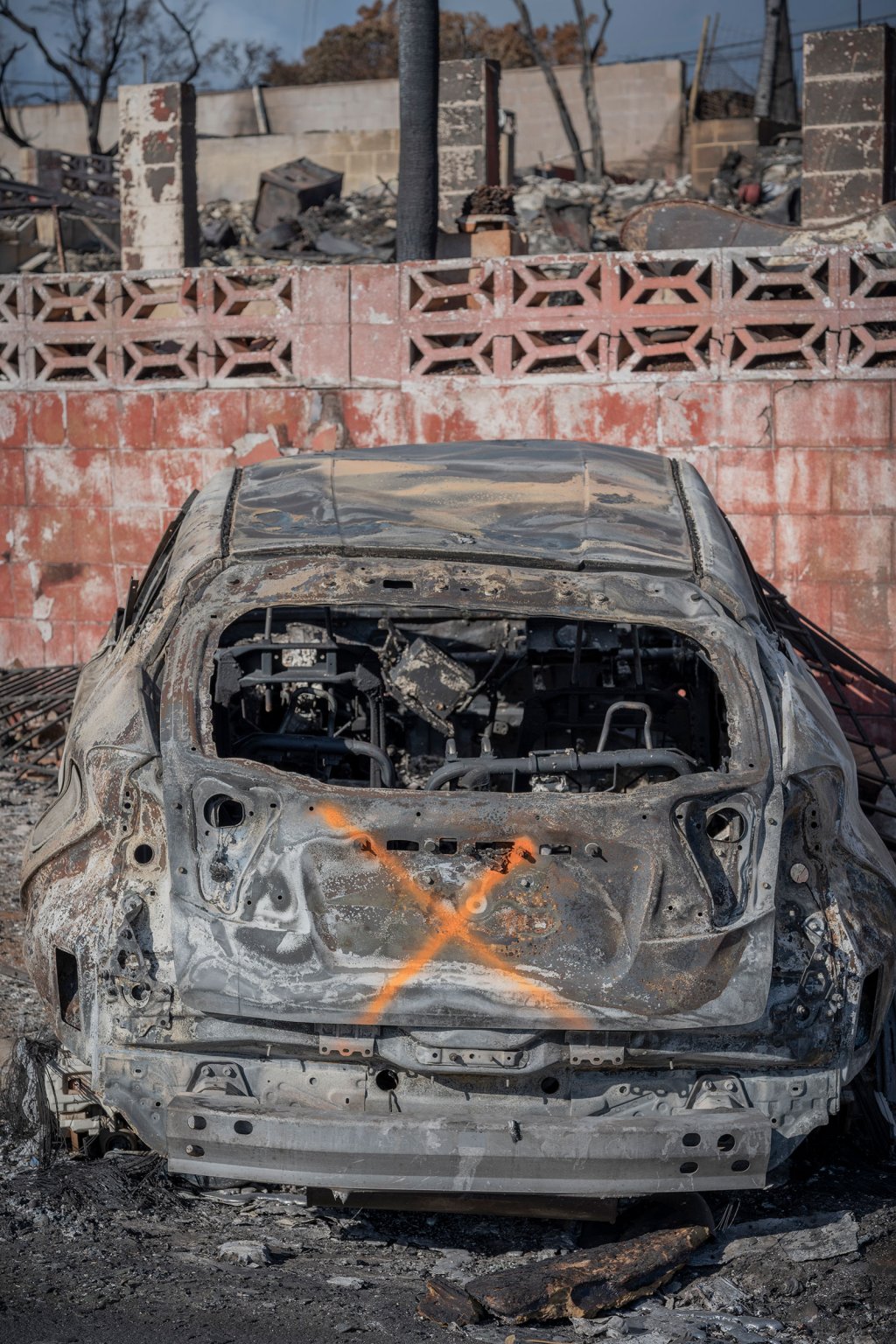


Read more: Why the Maui Wildfire Was So Deadly



Read more: What to Know About the Government Response to the Maui Wildfires

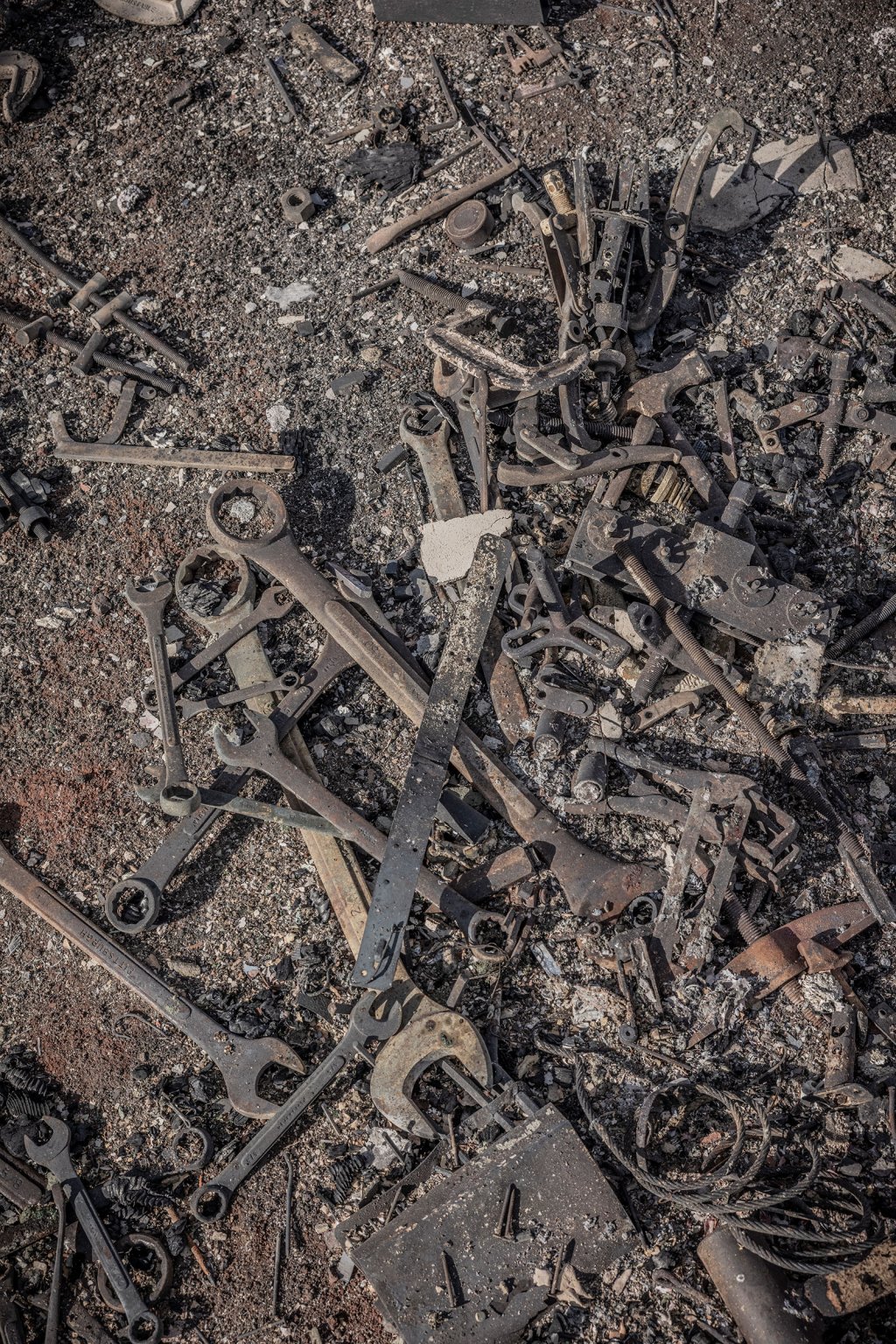

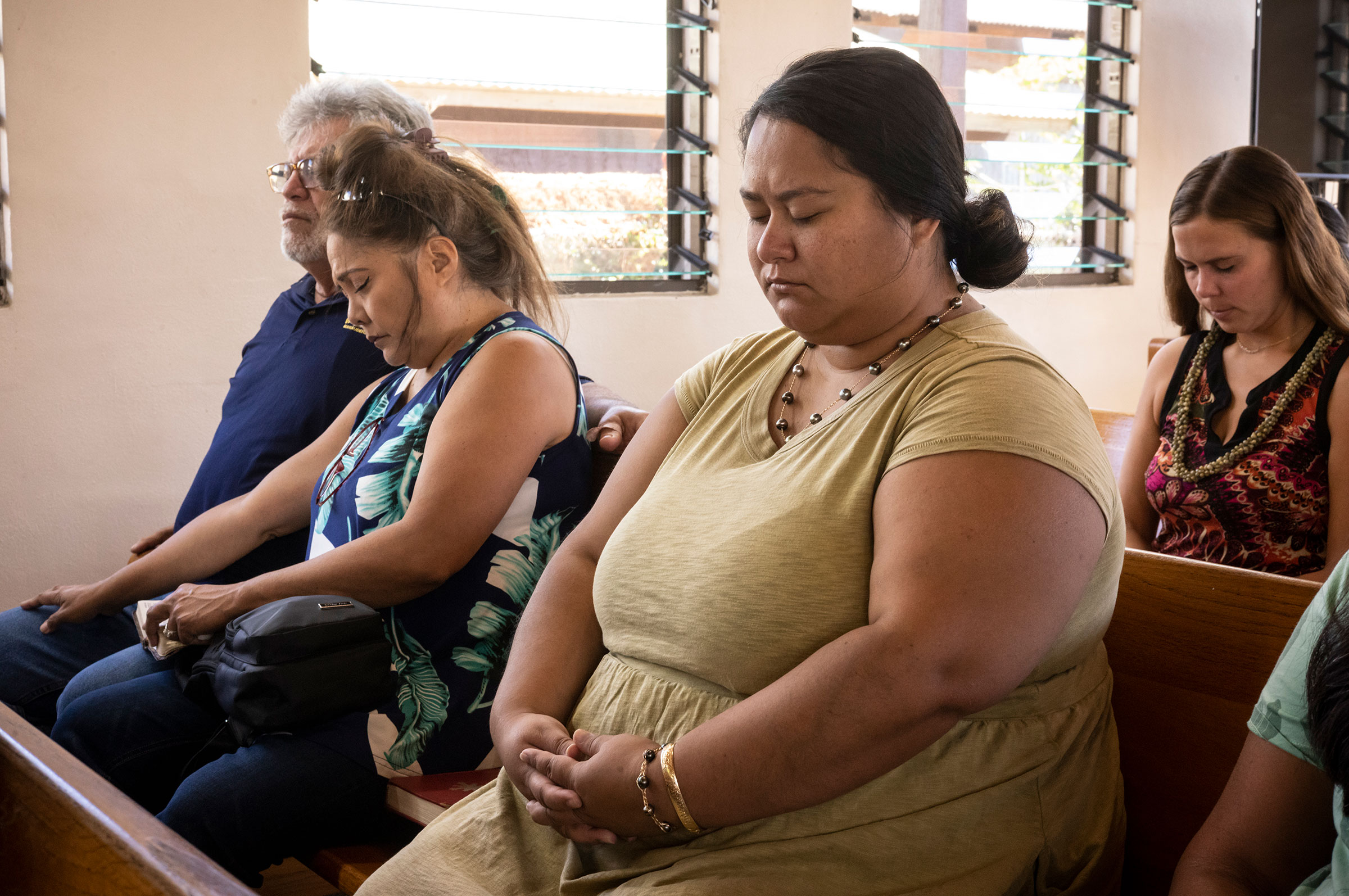

David Butow for TIME